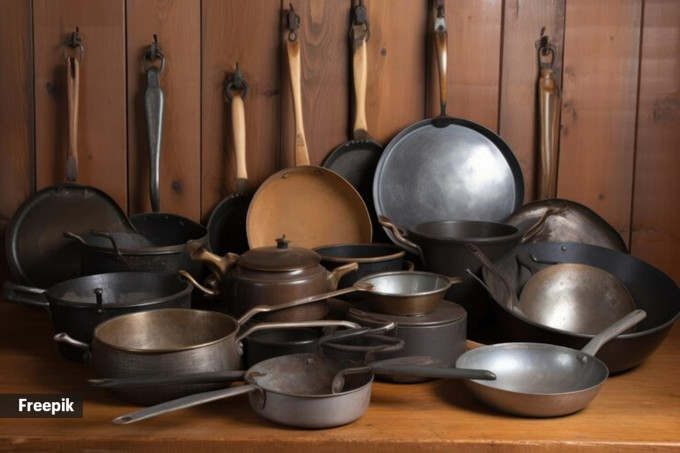What the ICMR guidelines say about appropriate cooking methods
The Indian Council for Medical Research (ICMR) has taken a proactive stance by issuing a comprehensive revised Dietary Guidelines for Indians (DGIs) this week. This was led by the apex health research body the National Institute of Nutrition (NIN) in Hyderabad.
Alongside several guidelines for better health, including an urgency to avoid the consumption of protein supplements, ICMR also recognises the profound impact of food preparation methods on nutritional content and health outcomes.

One of the guidelines emphasises the importance of adopting appropriate pre-cooking and cooking techniques. Through an intricate examination of various cooking methods and their effects on food, as well as practical advice on the safe usage of diverse cookware, these guidelines serve as a roadmap for those seeking to optimise their dietary habits while safeguarding their health.
Shubha Ramesh L chief dietician at DHEE Hospitals as well as Veena V, dietician, Aster Women and Children Hospital, Whitefield, Bangalore, elaborated on this guideline that people can follow to retain the nutrients in their foods and ensure safety while cooking.
How do pre-cooking methods contribute to healthier food preparation and consumption?
Shubha says, “The ICMR highlights pre-cooking methods like soaking, blanching, and marinating to enhance the nutritional quality and safety of foods. Soaking grains and legumes, for instance, reduces phytic acid, which inhibits the absorption of minerals. Blanching vegetables before cooking helps in reducing microbial load and removing pesticide residues, preserving colour, texture, and nutrients.”
These methods also contribute to reducing cooking time and energy consumption, making food preparation more efficient while retaining essential nutrients that might be lost during prolonged cooking.
Pre-cooking with methods like steaming or light boiling can minimise nutrient loss from water-soluble vitamins like vitamin C in vegetables, according to Veena. “Compared to direct frying or stewing, these methods help retain valuable nutrients in your food. Also, choosing food from the outlined food group ensures the necessary micro and macro nutrients, needed for the body.”
 These guidelines serve as a roadmap for those seeking to optimise their dietary habits while safeguarding their health. (Source: Freepik)
These guidelines serve as a roadmap for those seeking to optimise their dietary habits while safeguarding their health. (Source: Freepik)
Distinct effects of various cooking methods mentioned in the guideline
Shubha explains the effects of each of the cooking methods mentioned in the guideline, on your food:
*Boiling and steaming: These help preserve water-soluble vitamins and minerals when compared to methods like frying. Steaming is particularly effective in retaining the integrity of nutrients and preventing the loss of water-soluble vitamins.
*Pressure cooking: Cooking in a pressure cooker helps in retaining the nutrients of food by cooking them quickly under steam pressure, reducing the time and thus preserving vitamins and minerals.
*Frying and shallow frying: Frying or shallow frying increases the fat content of food, which can affect cardiovascular health if consumed excessively. However, it can improve the taste and palatability of food.
*Microwave cooking: This method preserves nutrients effectively due to short cooking times.
*Roasting, barbecue, and grilling: These cooking methods introduce harmful compounds like polycyclic aromatic hydrocarbons (PAHs) and advanced glycation end products (AGEs) if not done properly.
Key considerations when using different types of cookware mentioned in the DGIs
In terms of cookware safety, Shubha suggest the following key considerations when using different types of cookware:
Earthen pots: Offer a natural and traditional cooking medium that can enhance the flavour and mineral content of food. However, they must be treated properly to avoid contamination.
Metal and stainless steel cookware: Durable and safe for various cooking methods but should be used correctly to avoid leaching of metals into food.
Non-stick pans coated with teflon: Useful for low-fat cooking but should not be overheated to prevent the release of toxic fumes.
Granite stone cookware: Considered safer and more durable than traditional non-stick, provided it does not contain harmful chemicals.
Practical tips safely and effectively utilising different cooking methods and cookware
To optimise nutrition and safety, Veena recommends using pre-cooking methods to reduce oil in stir-frying; steaming vegetables to retain vitamins; limiting high-heat frying; using well-maintained stainless-steel cookware; avoiding overheated non-stick pans; and opting for lower heat cooking with all of them. “More research is needed on graniteware cookware, so consider other options for now,” she says.
Disclaimer: The copyright of this article belongs to the original author. Reposting this article is solely for the purpose of information dissemination and does not constitute any investment advice. If there is any infringement, please contact us immediately. We will make corrections or deletions as necessary. Thank you.
